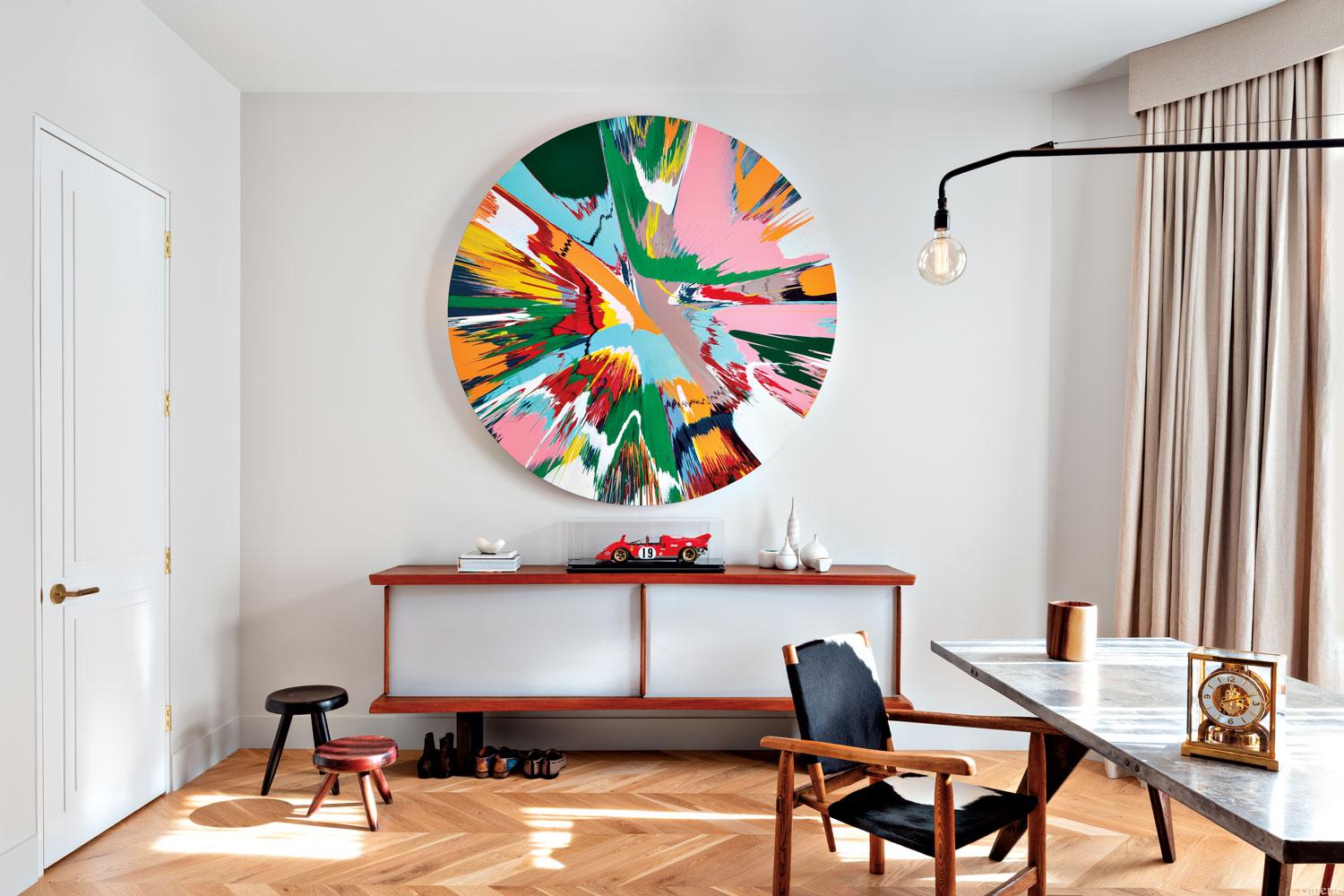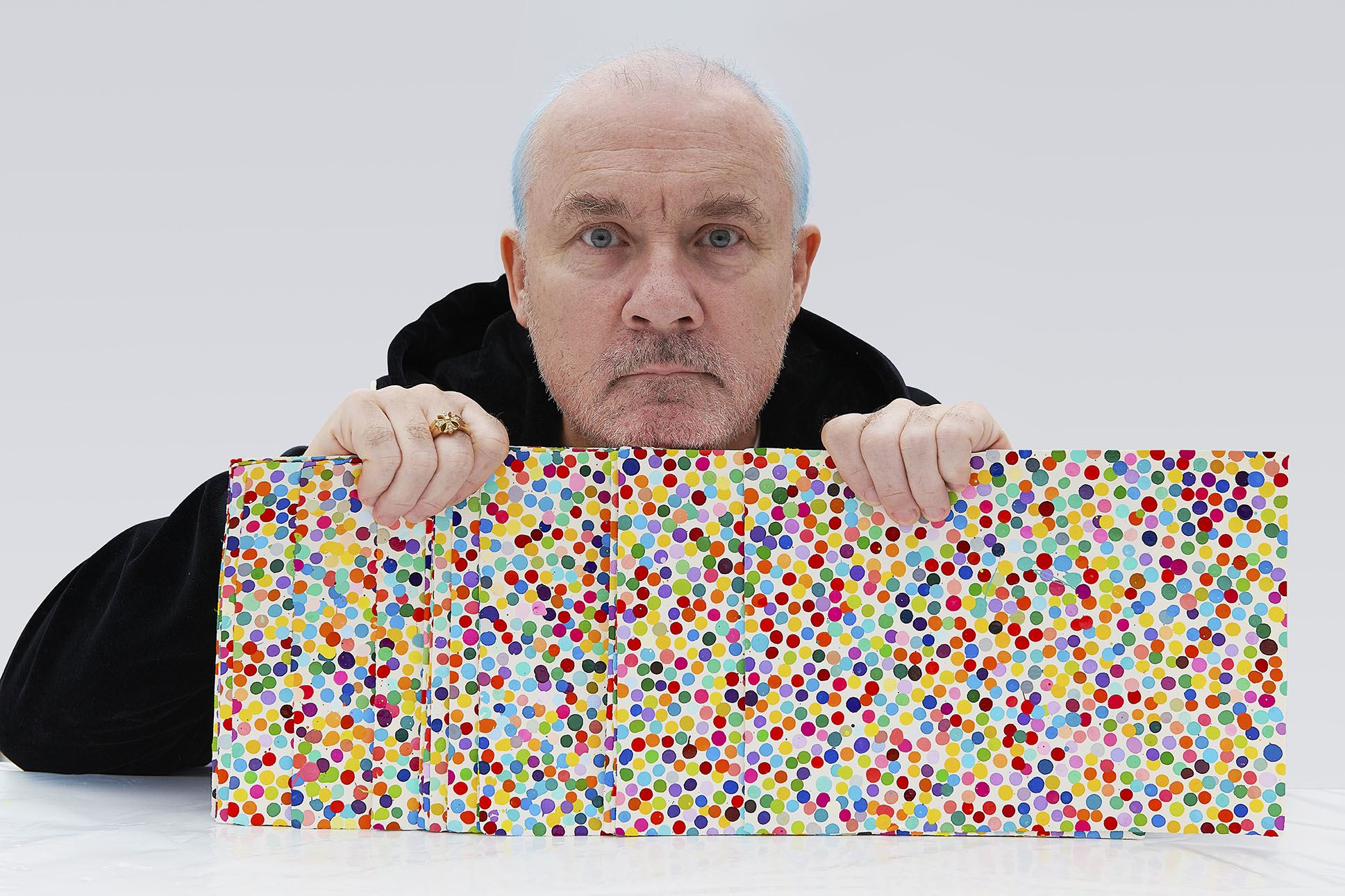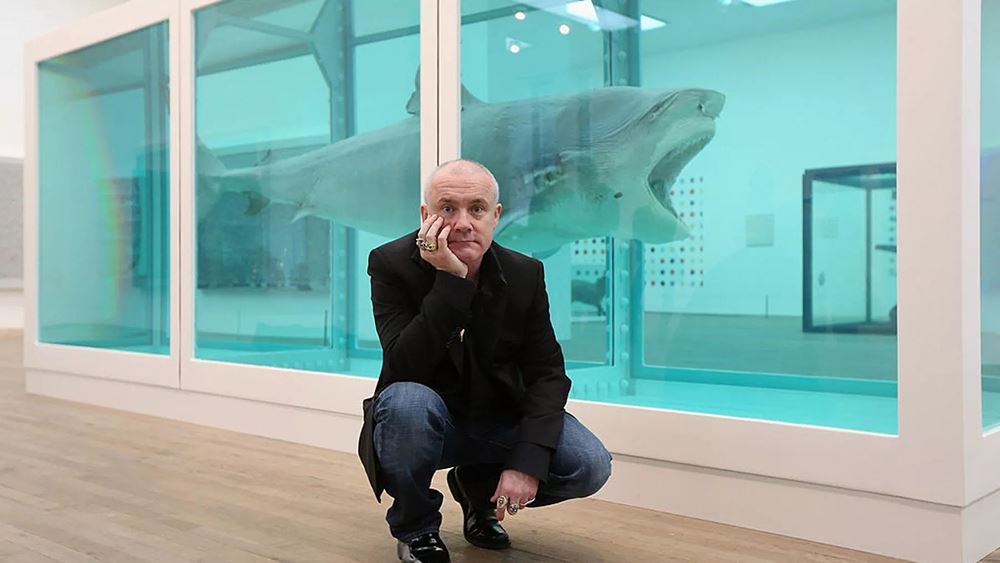27/09/2021
In the mind of the eclectic Damien Hirst

by Giulia De Sanctis
British artist Damien Hirst, known to most for his contradictory and provocative works, builds around him the movement of Young British Artists, established during the 90s. Since his youth, the artist has always explored the unacceptable idea of death and since the end of the 80s he has created a wide variety of installations, sculptures, paintings and drawings with the intent of exploring the complex relationship between art, life and death. His rapid rise is linked to the proximity and promotion by the collector and advertiser Charles Saatchi and from 1991 he begins working on the series Natural History; here The Physical Impossibility Of Death in The Mind Of Someone Living, consisting of a tiger shark of over 4 meters placed in formaldehyde inside a tank: the work became the symbol of British art of the years '90 as well as its manifesto. Its sale in 2004 made Hirst the most expensive living artist after Jasper Johns. Intimately linked not only to the informal, but also to the action painting and pop art, he is known for his techniques called spin paintings, made by painting on a circular surface in rotation like a vinyl on the turntable, and spot paintings, consisting of rows of colored circles, often imitated by the advertising graphics of recent years.
 A Hirst “Spin” painting in Tina Kim’s Upper West Side townhouse.
A Hirst “Spin” painting in Tina Kim’s Upper West Side townhouse.
PHOTO: TIMOTHY DOYON © DAMIEN HIRST AND SCIENCE LTD. ALL RIGHTS RESERVED / DACS, LONDON / ARS, NY 2020
Another work that has travelled around the world for its absolute madness and genius is definitely For the Love of God: made in 2007 and presented at the art gallery White Cube in London, It is a platinum skull made from a real skull of a young man who died at 37 years of age including his original teeth, covered by 8601 diamonds, for a total of 1,106.18 carats. On the front in particular is set a huge pink diamond and the title of the work seems to have been inspired by the mother of Hirst, who commented "for the love of God!" the umpteenth invention of the son; to date, the work is valued at $99 million. Also revolutionary is Damien Hirst’s approach to clientele often bypassing traditional tunnel channels and selling directly to the public through millionaire auctions like Sotheby’s - in 2008 at their auction, without gallery intermediation, 244 new works by Hirst have been sold - or dedicated art shops, so the serial production of spot-paintings and spin-paintings and the more modest works have been prolific, allowing many gallery owners and private individuals to own a prêt-à-porter piece of the artist.
Hirst’s first goal in his artistic poetics is to create an event, making important the shock that provokes his art that she herself and, like many other artists from Warhol onwards, no longer believes in the craftsmanship of the author, but with the intention of communicating ideas and being a brand. To date the artist has faced the world of the NFT with The Currency, his first collection of 10 thousand non-marketable tokens that correspond to 10 thousand unique physical works of art, hand-painted on paper and stored in a safe vault in the United Kingdom; Each of the NFT, available for purchase at the basic price of 2 thousand dollars, is subject to a very special contract: buyers must decide within a year whether to want to maintain ownership of the NFT or physical work. In the first case, the paperwork will be burned, while in the second case, instead, the rights to the work based on the blockchain will be lost. "This project is first and foremost about art and people, but it also investigates knowledge and value in general and in particular the value of art" explains Damien Hirst and asks the question: "What support does it give more value, more credit? Digital NFT or physical artwork?".

 After graduating from language high school, love for art led Giulia De Sanctis (Turin, 1998) to obtain Communication and Enhancement of Artistic Heritage’ degree at the Accademia Albertina di Belle Arti in Turin. She collaborated with art galleries in Turin as an assistant, dealing with the cataloging of the works, the preparation of exhibitions and the press office. She collaborates actively with various magazines and web publications of the art sector.
After graduating from language high school, love for art led Giulia De Sanctis (Turin, 1998) to obtain Communication and Enhancement of Artistic Heritage’ degree at the Accademia Albertina di Belle Arti in Turin. She collaborated with art galleries in Turin as an assistant, dealing with the cataloging of the works, the preparation of exhibitions and the press office. She collaborates actively with various magazines and web publications of the art sector.


 A Hirst “Spin” painting in Tina Kim’s Upper West Side townhouse.
A Hirst “Spin” painting in Tina Kim’s Upper West Side townhouse.

 This site uses anonymous technical cookies to ensure navigation and third-party cookies to monitor traffic and to offer additional services such as viewing videos or messaging systems. Without third-party cookies some pages may not work properly. Third-party cookies can track your activity and will only be installed by clicking on the "Accept all cookies" button. You can change your selection at any time by clicking on the "Cookie" link on each page at the bottom left. By clicking on one of the two buttons you declare that you have read the privacy policy and to accept the conditions.
This site uses anonymous technical cookies to ensure navigation and third-party cookies to monitor traffic and to offer additional services such as viewing videos or messaging systems. Without third-party cookies some pages may not work properly. Third-party cookies can track your activity and will only be installed by clicking on the "Accept all cookies" button. You can change your selection at any time by clicking on the "Cookie" link on each page at the bottom left. By clicking on one of the two buttons you declare that you have read the privacy policy and to accept the conditions.